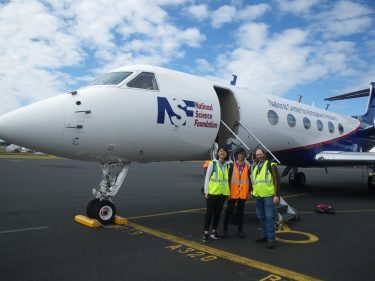
University of Washington scientists are part of an international team that is spending six weeks in the remote Southern Ocean to tackle one of the region’s many mysteries: its clouds.
What they discover will be used to improve climate models, which routinely underestimate how much solar energy bounces off clouds in that region. Simulating how much solar energy is absorbed or reflected on Earth is key to calculating the future of the planet under climate change.
“Much of what we currently know about Southern Ocean cloud, aerosol and precipitation properties comes from satellite-based estimates, which are uncertain, and have undergone few comparisons against independent data,” said team member Roger Marchand, a UW research associate professor of atmospheric sciences. “The data collected during SOCRATES will also enable us to evaluate current satellite data over the Southern Ocean, as well as potentially help in the design of better satellite-based techniques.”
Read more at UW Today »

